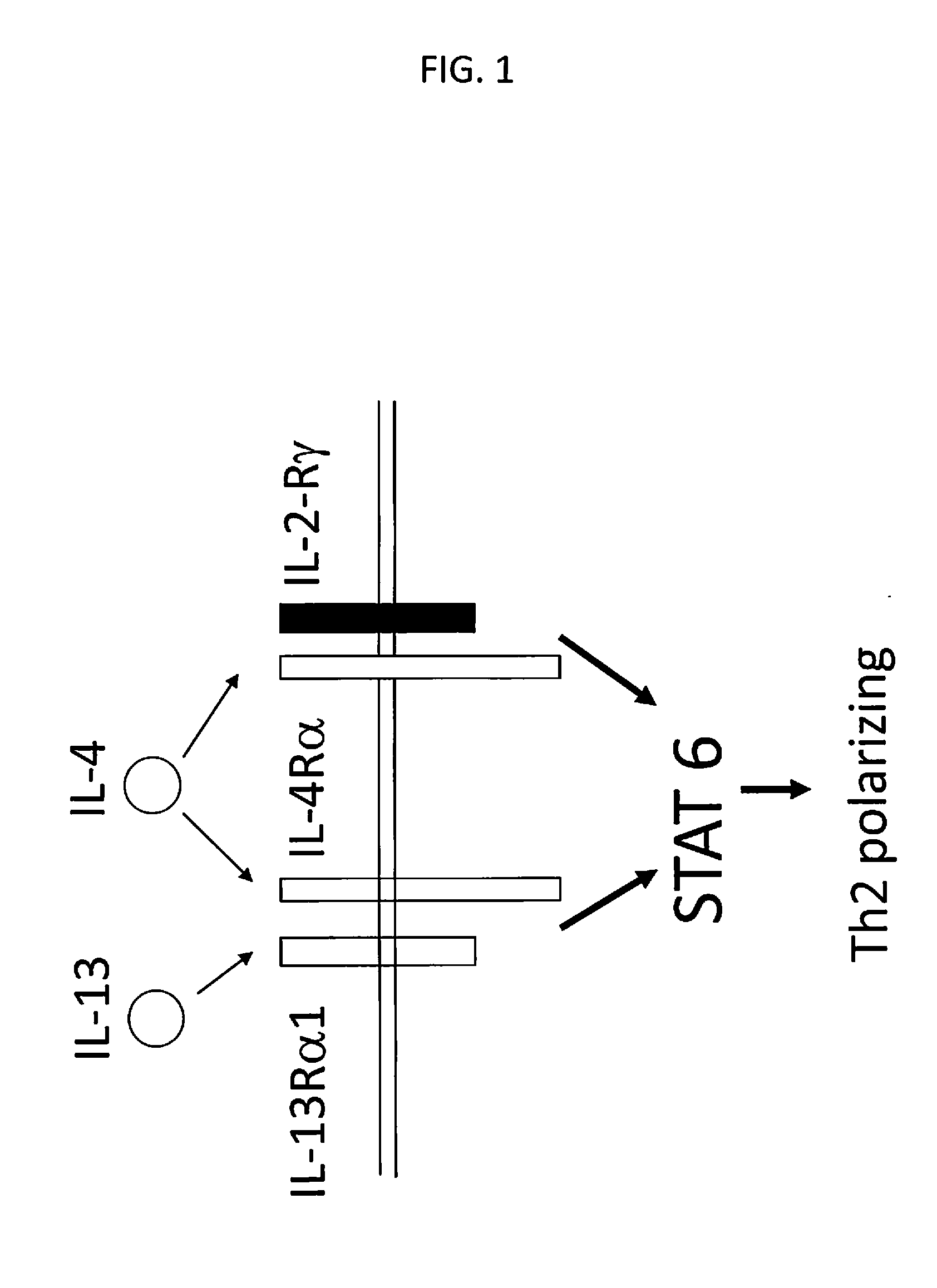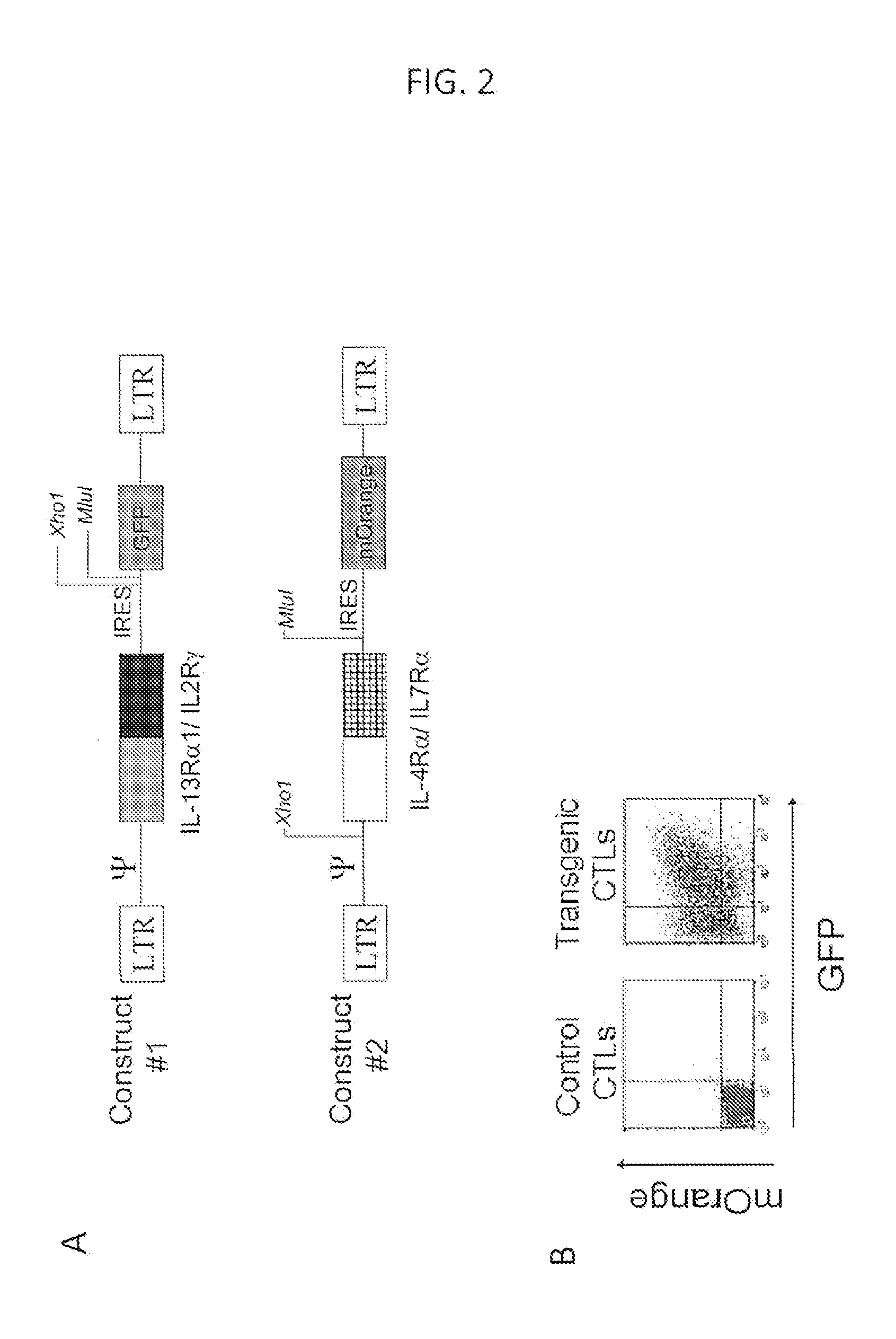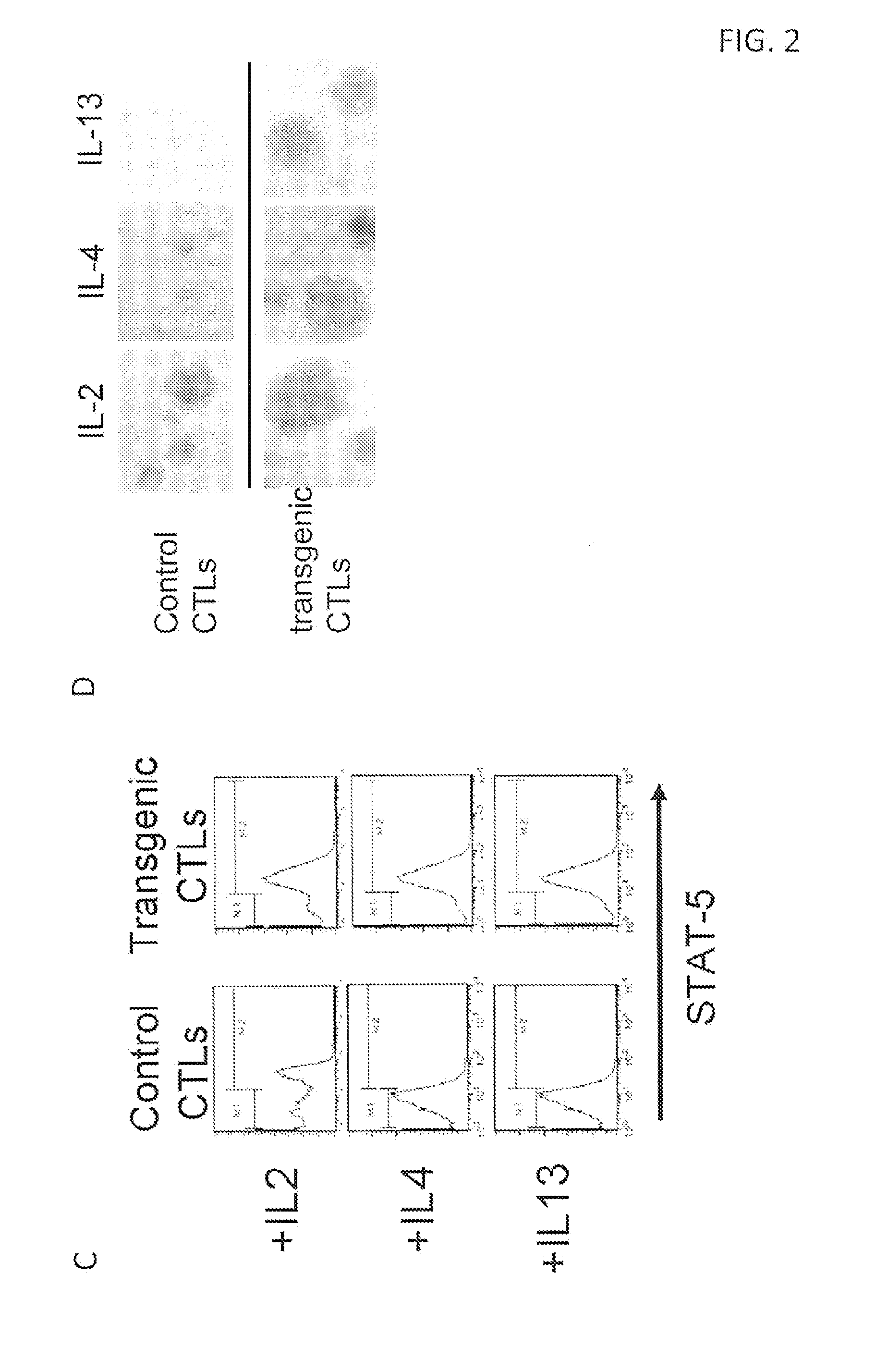Reversing the effects of the tumor microenvironment using chimeric cytokine receptors
a technology of chimeric cytokine receptor and tumor microenvironment, which is applied in the field of immunology, cell biology, molecular biology, and medicine, can solve the problems that conventional chemo and radiotherapy often produce insufficient benefits
- Summary
- Abstract
- Description
- Claims
- Application Information
AI Technical Summary
Benefits of technology
Problems solved by technology
Method used
Image
Examples
example 1
Reversing the Effects of the Tumor Microenvironment Using Chimeric Cytokine Receptors
[0106]Pancreatic cancer remains the fourth commonest cause of cancer mortality in developed countries. Clinical manifestations develop late and the disease metastasizes early, and the incidence and mortality rates have remained almost identical for >50 years (Sweeney et al., 2009; Wong et al., 2009). Improved treatment strategies based on understanding of the disease biology are thus needed. Tumor-associated antigens (TAA) expressed by malignant cells can be immunogenic, and thus are potential targets for immune destruction (Tassi et al, 2008; Han et al., 2009; Rong et al., 2009; Li et al., 2008; Plate, 2007). The adoptive transfer of in vitro expanded TAA-specific cytotoxic T lymphocytes (CTLs) can effectively treat tumors including Hodgkin's Lymphoma and melanoma (Bollard et al., 2007; Morgan et al., 2006). While infusion of CTLs targeting pancreatic cancer-expressed TAA has therapeutic potential,...
example 2
Genetic Modification of Car-Modified T Cells with IL4Rα / IL7Rα as Example
[0156]Tumors have evolved complex mechanisms to subvert the cellular immune response including expression of FasL or PD-L1 that induce anergy or apoptosis in effector T cells. Included in the microenvironment are recruitment of regulatory T cells and secretion of TGF-β and other immunosuppressive cytokines that inhibit T cell proliferation. There is constitutive expression of indoleamine 2,3-dioxygenase (IDO) by tumors and regulatory dendritic cells, which depletes tryptophan, resulting in T cell anergy and downregulation or modulation of MHC and co-stimulatory molecules. T cells can be suppress by a diverse of factor present in the tumor microenvironment, including at least IL10, TGF-β, IL13, and IL-4. One can overcome this problem if a cytokine receptor exo-domain is used with a normative endodomain to arm the T cells to withstand the inhibitory tumor microenvironment.
[0157]In embodiments of the invention ther...
PUM
| Property | Measurement | Unit |
|---|---|---|
| time | aaaaa | aaaaa |
| structures | aaaaa | aaaaa |
| concentrations | aaaaa | aaaaa |
Abstract
Description
Claims
Application Information
 Login to View More
Login to View More - R&D
- Intellectual Property
- Life Sciences
- Materials
- Tech Scout
- Unparalleled Data Quality
- Higher Quality Content
- 60% Fewer Hallucinations
Browse by: Latest US Patents, China's latest patents, Technical Efficacy Thesaurus, Application Domain, Technology Topic, Popular Technical Reports.
© 2025 PatSnap. All rights reserved.Legal|Privacy policy|Modern Slavery Act Transparency Statement|Sitemap|About US| Contact US: help@patsnap.com



